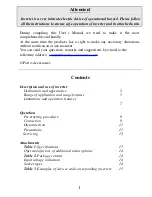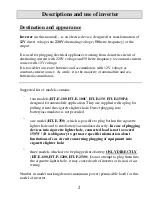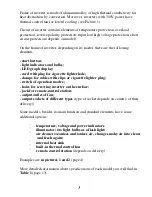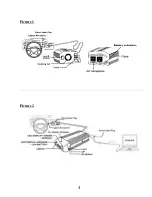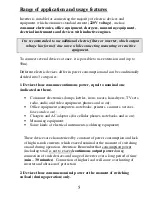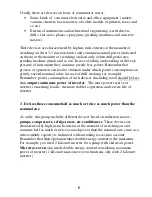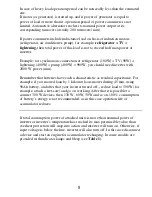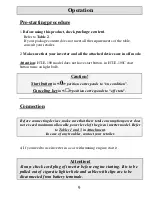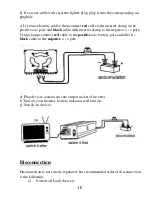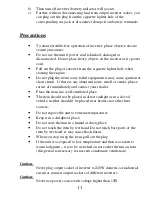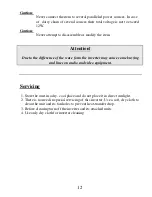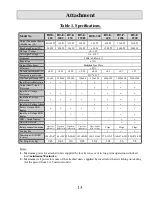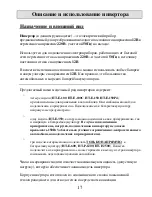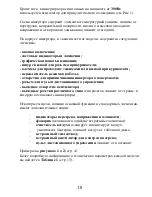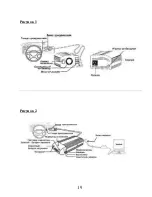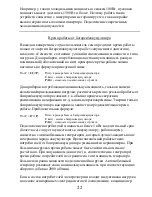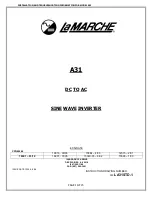
7
Limitations and operation features
In a large list of electric devices, there are several exclusions.
These are devices which have no strictly fixed value of power consumption,
which can rapidly change during operation or have extremely high power
consumption at the start /during operation. Welding apparatus and refrigerators
produced 7-10 years ago or earlier, can exemplify devices of this group.
Starting power of such a refrigerator with 100 W power can run up to 1500 W
and higher. That is why operation of such devices with shared inverters is not
guaranteed, because possibility of inverter’s breakage is very high. Connection
of modern refrigerators is allowed.
Battery operation
In every specific case user determines battery operation (without motor
operation) by himself, basing his choice on its capacity, state, use conditions,
power and load type. For devices, those consume continuous power equal to
nominal one: it is possible to count up approximate duration of operation
period by the following formulas:
T (hour)
– battery operation;
C (
А
·hour)
– battery capacity;
P (Watt)
– attached units power;
Min period:
T = (C
×
8,5) / P;
Max period:
T = (C
×
12) / P;
It is harder to count up battery operation for devices those consume nominal
power at the moment of switching on/load only. The reason is that processes of
drilling, sawing, grinding are of short duration.
As a rule, energy of battery is enough for enduring operation period.
Approximate formulas:
Min period:
T = (C
×
17) / P;
Max period:
T = (C
×
24) / P;
Power consumers (more than 1 kilowatt) for the period of 1 hour and longer
are to be attached to battery with joint
automotive alternator, which is better to
start after charge exhaustion. Period of off-line operation diminishes unevenly.



